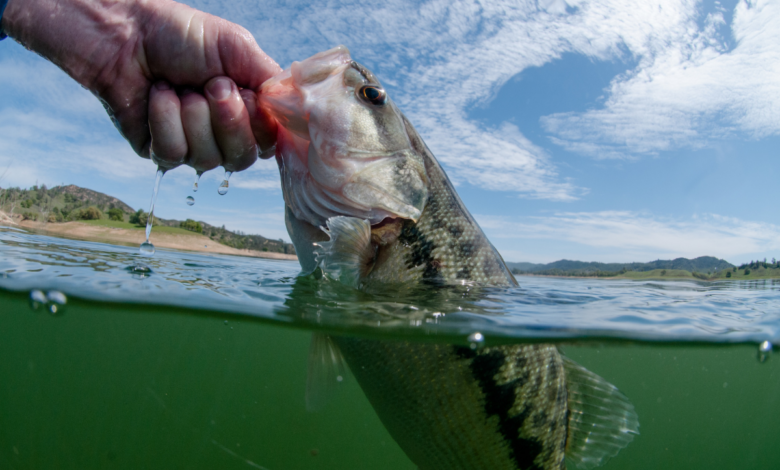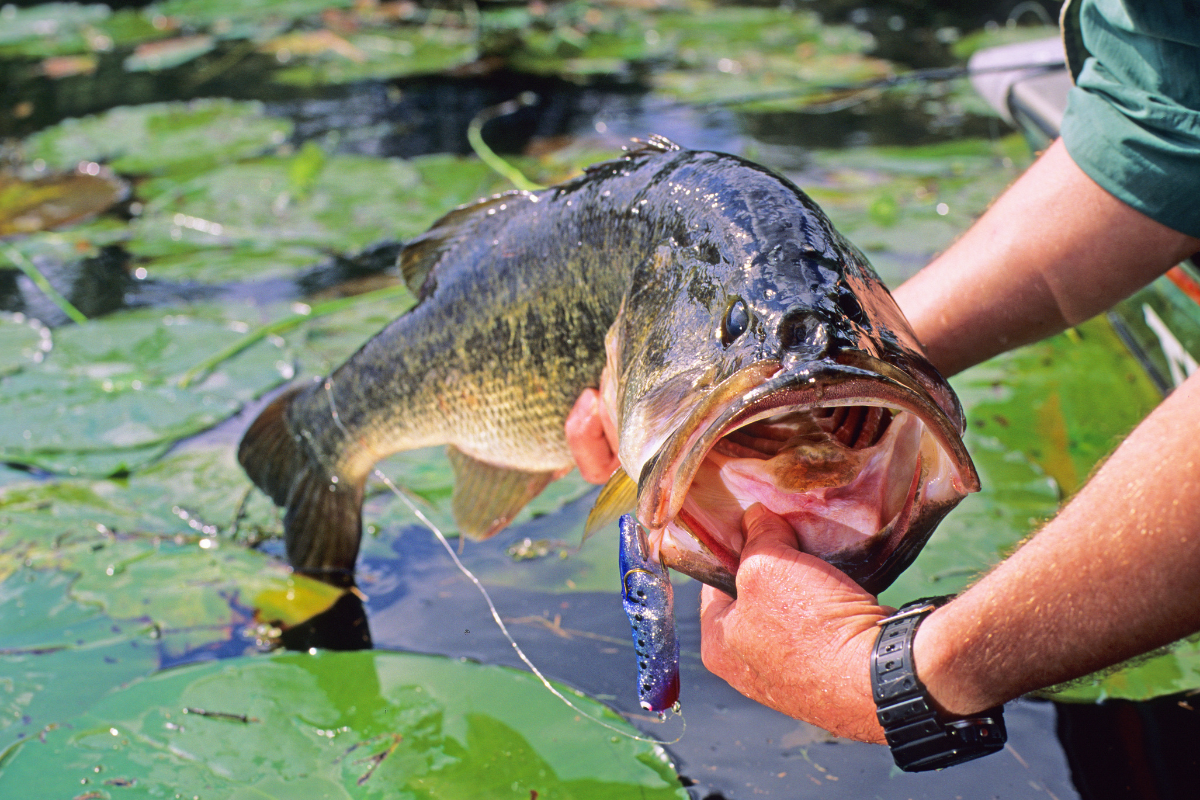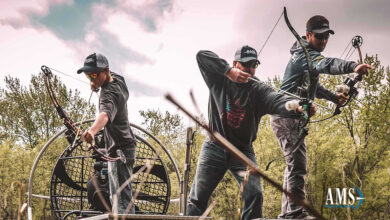8 Best Prespawn Bass Lures for Early Season Fishing

Winter is almost over, and you know what that means, prespawn period!
It’s that time of the year when the temperatures are beginning to rise, the icy grip is loosening, and prespawn bass are starting their migration to the shallows.
You want to be ready with the best prespawn bass lures. Consider our recommendations for a successful catch.
H2: Jerkbaits
Jerkbaits are designed with two or three treble hooks and have a minnow-shaped, slender design. The lures are characterized by their erratic, darting action.
When fishing, I normally twitch or jerk the road of my Rapala X-Rap, causing the lure to imitate a fleeing or injured baitfish. It’s important that you pause between twitches, to allow the bait to rise slowly or suspend, tempting nearby bass.
Jerkbaits excel best in clear water where bass can easily notice their subtle and realistic movements.
H2: Spinnerbaits
Spinnerbaits feature one or several metal blades spinning around a wire shaft. The blades attract bass by creating flash and vibration.
I love these prespawn bass baits for their versatility. You can use them in different conditions. You’ll, however, find them more useful in early spring during the spawn period and when there’s mud after heavy rains.
Their design allows them to navigate through shallow waters covered in grass and submerged vegetation with ease.
They are effective for chasing baitfish during active feeding times.
Our pick for the best spinnerbait would be the Shimano Swagy Strong Double Willow.
H2: Swimbaits
Swimbaits have some of the most realistic designs. Some even feature jointed sections for enhanced swimming action and added realism. I personally love the SPRO BBZ Rat as it has a
paddle tail that wobbles when retrieving the bait.
These lures are designed to float, sink, or suspend in water. This versatility makes them a suitable option for fishing at different depths.
You can use them in open water when bass are actively chasing baitfish. You can use them in shallow covers like grass beds. And you can also use them to target deeper structures.
From my experience, swimbaits are more effective when they are of the same size as the local forage. Match these for more success.
H2: Finesse Worms
I’m always impressed by the slender and elongated profile of finesse worms. Even though they are made using soft plastic, they look so real.
To be successful with these prespawn bass baits, use the finesse technique, combining slow and subtle movements to entice less active and cautious bass.
I recommend using these lures in clear water and high-pressure areas. These conditions give the lures a natural and subtle presentation that entices many bass.
If you are looking for the best finesse worms, the Green Pumpkin Obee Finesse Worm is a good place to start. I’m also a huge fan of the reliable Senko worm.
H2: Lipless Crankbaits
The Bill Lewis Rat-L-Trap Lipless Crankbait is among my favorite prespawn baits around grass. I fish a lot in places with milfoil and hydrilla.
These lures lack the diving lip characterized in traditional crankbaits making them more versatile. They are tight and highly vibrative when retrieved. This, combined with the sinking motion, makes them mimic dying or injured prey. Bass cannot resist them.
Another thing that makes them highly attractive to bass is their distinct vibrating or rattling sound underwater.
Their visual appearance, along with this sound, makes them appealing to bass from a distance.
H2: Jigs
Also known as the chatterbaits, jigs are one of the most versatile shallow water lures. I own the Stanley Big Nasty Flip Jig that I use when I want to transition from pea gravel to chunk rocks or vice versa.
They are very sensitive which is useful during pre-spawn and I also love that they are available in different colors and shapes.
When are jigs most suitable?
One, around areas with brush poles, fallen trees, and rocks. Two, in deep waters, when the bass are held in transitional zones. And finally, when you are accustomed to the flipping and pitching technique.
When using jigs, I’d recommend going for a rod with a strong backbone. This will give you better control and help you detect subtle bites.
H2: Crankbaits
Like swimbaits, crankbaits can float, sink or suspend. This is due to their distinctive bill or lip at the front. This determines their diving depth.
When retrieving the crankbait, the lip will wobble from side to side trying to emulate an injured baitfish. This triggers aggressive strikes from bass.
The lures are perfect for mid to deep zones. Deep diving crankbaits are used to target bass found in deeper structures.
Their slow and steady retrieval can also entice cooler temperatures.
We recommend going for the Strike King KVD Square Bill crankbait for the best results.
H2: Umbrella Rig
From its name, an umbrella rig imitates a school of fish. It features several arms to which an individual lure is attached. Its design allows it to trigger several strikes with a single cast.
This lure excels in open water where bass are in search of schools of baitfish. You will find it particularly effective for catching actively feeding bass.
Your local regulation may have restrictions on the number of hooks allowed. So beware of this before using an umbrella rig.
The Yum Yumbrella Ultralight Rig is one of the best products in its category.
H2: Choosing the Best Prespawn Bass Lures
Choosing the best prespawn bass lures involves understanding the behavior of bass. Here are factors to consider when choosing the best prespawn bass lures.
H3: Water Temperatures
Water temperatures heavily influence prespawn bass activity. The transition to spring signals the onset of the prespawn period.
When you can understand the preferred temperature range for bass activity, then you can pinpoint where to focus your efforts.
The optimal temperature range for bass is in the upper 40s to 60s degrees Fahrenheit.
So, you want to time for this period, neither being too early or too late. Otherwise you’ll be less successful.
H3: Color Selection
The color of your lure is another critical factor to your success. Prespawn bass are selective based on the prevalent forage, light conditions, and water clarity.
Their visibility is better in clear water which makes lures of subtle or natural colors more effective. Go with something that mimics the local forage or that blends in with the surrounding.
Since sunlight and cloud cover impact how bass perceive lure colors, settle for a flashy lure on bright days. On cloudy days, more solid or darker colors will stand out better.
Don’t be afraid to experiment with different colors. If whatever color you’re using isn’t producing results, switch to another.
H3: Retrieval Speed
It’s also important to be able to retrieve your lure quick enough.
In cooler waters, especially early in the prespawn period, the bass will be less active. Slow retrieval will make lures like finesse worms or jerkbaits enticing to lethargic bass.
In warmer waters, where the bass have become more active, it’s time to speed up your retrieval. Lures like spinnerbaits and crankbaits are best suited for this. They imitate an aggressive baitfish or fleeing prey enticing a bass strike.
Experiment with both slow and fast retrieves under different conditions, taking note of how the bass respond.
H3: Stay Versatile
Speaking of bass response, they can be unpredictable, changing their behavior rapidly.
A successful fisherman or woman is one who is versatile, always adapting their tactics, lure selection and overall approach.
If your lure isn’t producing desirable results, have a diverse selection that allows you to switch to another. Experiment with different tactics to see what the bass are responding to.
And at times, the weather may be the problem. For example, bass may be more willing to go after fast moving lures on a windy day.

H2: Frequently Asked Questions
H3: What colors are good for Prespawn bass?
When the water is clear, opt for natural colors like green, brown and silver. In murky or stained water, high-contrast colors like red and orange will increase visibility.
Bass will respond differently to different colors depending on the light conditions and water temperature. Keep this in mind and don’t hesitate to experiment with different color combinations.
H3: What are the best lures for prespawn bass fishing?
The best prespawn bass lures include jerkbaits, spinnerbaits, crankbaits, finesse worms, swimbaits, and jigs. Have a diverse selection to allow you to adapt to bass preferences and changing conditions.
H3: What’s the best time to fish for prespawn bass?
Prespawn bass fishing is prevalent in early spring when the temperatures are beginning to rise. The optimal temperature range is between 40 to 60 degrees Fahrenheit. Monitor the temperature trend to help determine when the time is right.
H2: Final Thoughts
There you have it – the top 8 best prespawn bass lures.
Before deciding what lure to go with, it’s important to understand the conditions of the water body, the bass behavior and to remain versatile.
Remember, there is no one-size-fits-all with prespawn bass fishing. The best approach is where you experiment and adapt to different lures, sizes, colors and techniques.
Which prespawn bass lure is your favorite? Let us know in the comment section below.




One Comment